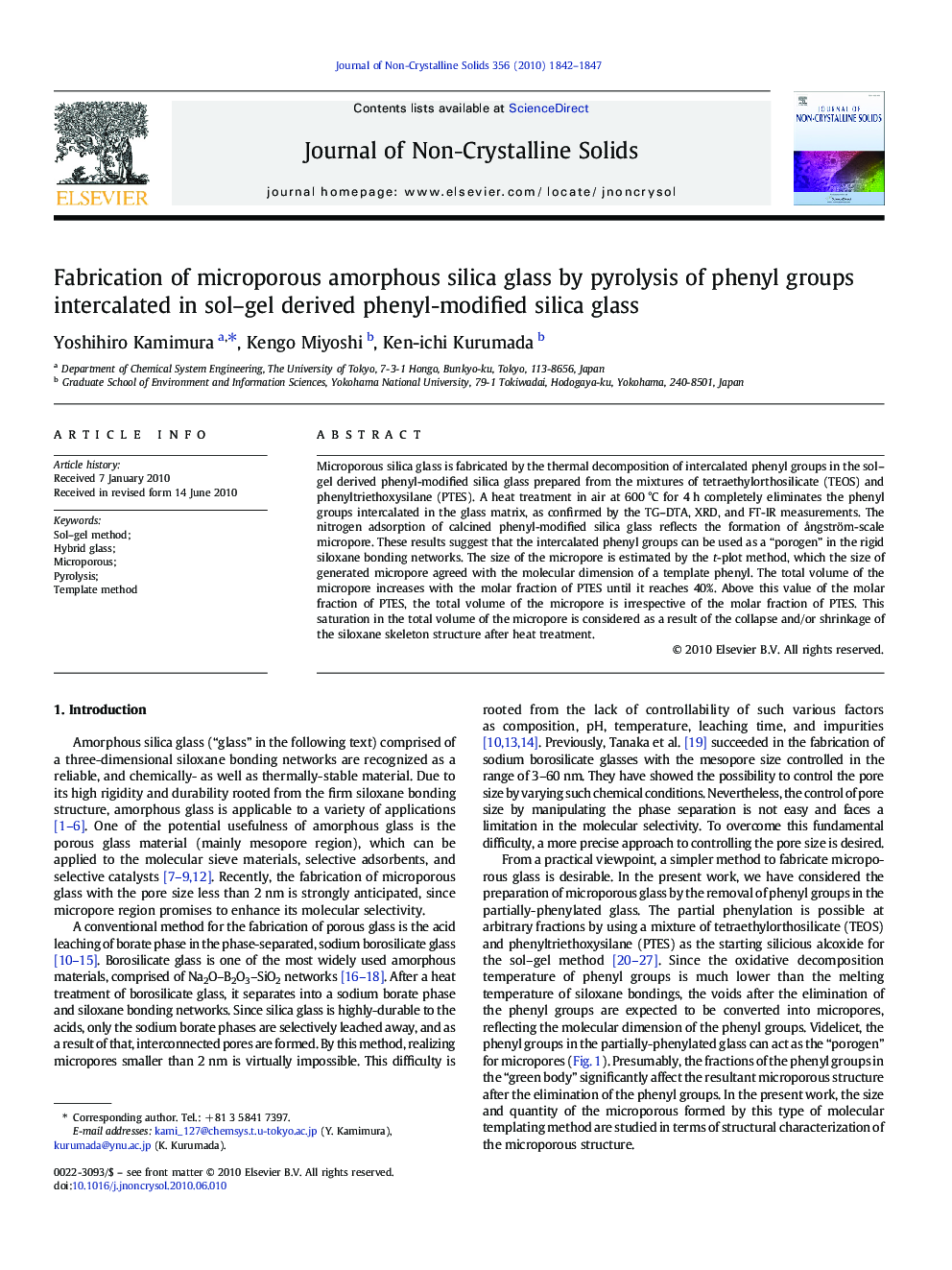| کد مقاله | کد نشریه | سال انتشار | مقاله انگلیسی | نسخه تمام متن |
|---|---|---|---|---|
| 1482564 | 1510491 | 2010 | 6 صفحه PDF | دانلود رایگان |

Microporous silica glass is fabricated by the thermal decomposition of intercalated phenyl groups in the sol–gel derived phenyl-modified silica glass prepared from the mixtures of tetraethylorthosilicate (TEOS) and phenyltriethoxysilane (PTES). A heat treatment in air at 600 °C for 4 h completely eliminates the phenyl groups intercalated in the glass matrix, as confirmed by the TG–DTA, XRD, and FT-IR measurements. The nitrogen adsorption of calcined phenyl-modified silica glass reflects the formation of ångström-scale micropore. These results suggest that the intercalated phenyl groups can be used as a “porogen” in the rigid siloxane bonding networks. The size of the micropore is estimated by the t-plot method, which the size of generated micropore agreed with the molecular dimension of a template phenyl. The total volume of the micropore increases with the molar fraction of PTES until it reaches 40%. Above this value of the molar fraction of PTES, the total volume of the micropore is irrespective of the molar fraction of PTES. This saturation in the total volume of the micropore is considered as a result of the collapse and/or shrinkage of the siloxane skeleton structure after heat treatment.
Journal: Journal of Non-Crystalline Solids - Volume 356, Issues 35–36, 1 August 2010, Pages 1842–1847